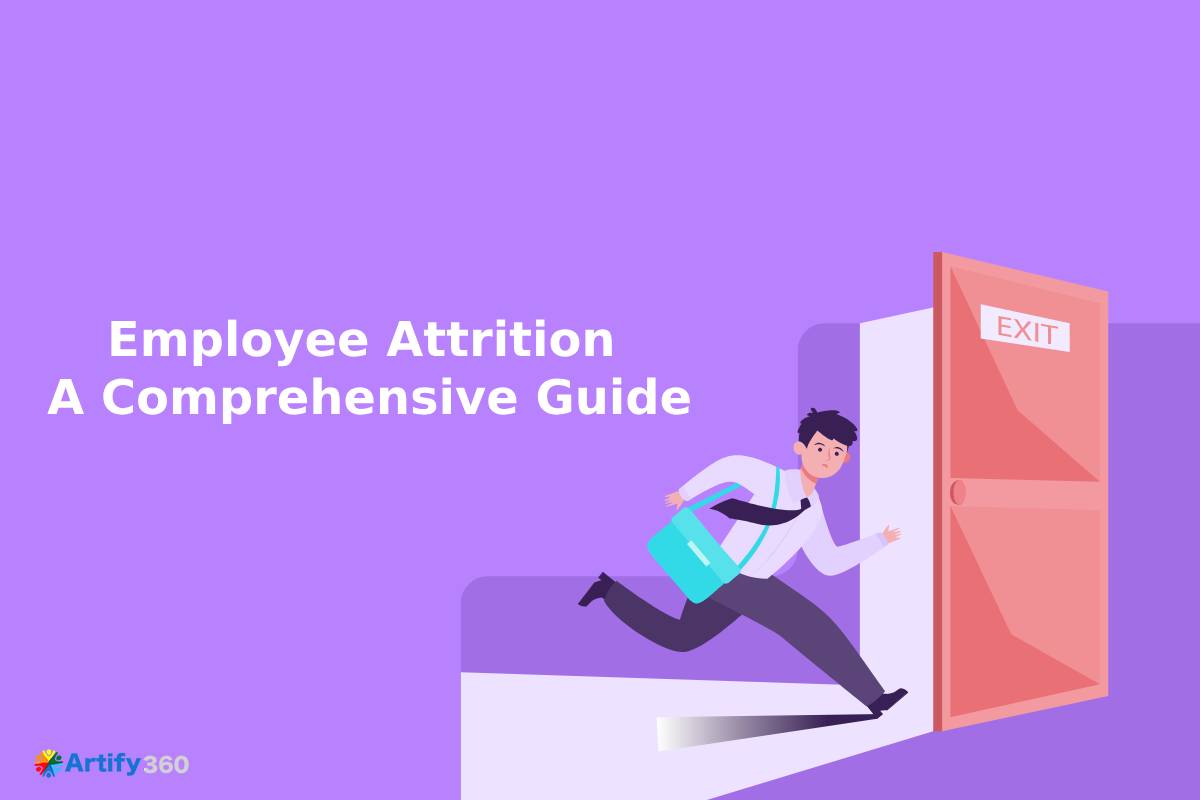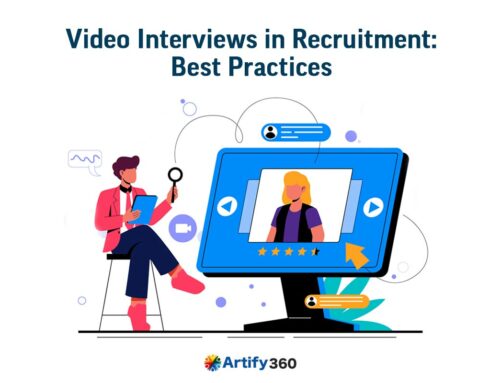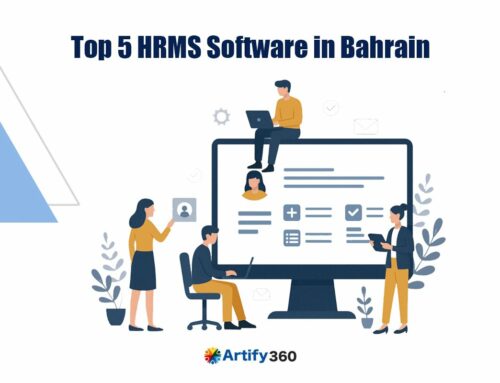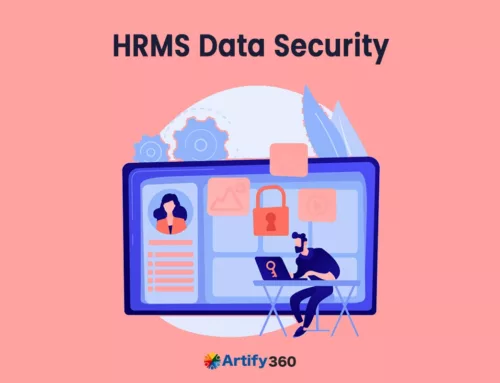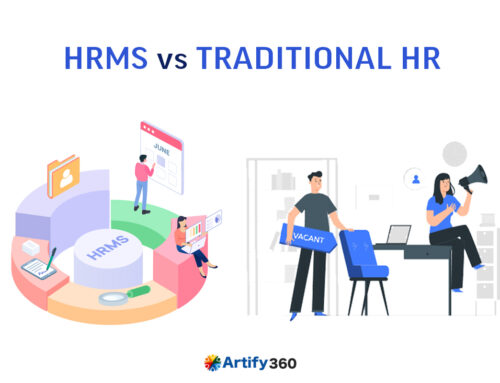If you look at any company or work culture, it is natural for the business perspective to take solid action with employee management. It is necessary for the overall development of the entire organization and its operational approach. One such factor that plays an important role in employee management is the concept of employee attrition.
Though attrition is related to the joining and departure of employees in an organization’s job roles or profiles, the important factor is to consider an exclusive process with strategic management of resources. The inflow and outgoing of your human capital resources can determine the growth and success of your organization.
Employee attrition is dynamically linked to the work culture of an organization. This article is a take on the core concept of employee attrition with its relevant features. The space also explores trends and patterns in the analysis of employee attrition in companies.
By the end of this post, you will be able to employ tips and tactics to manage the attrition problem in your organization without leading to further chaos or conflict.
What is Employee Attrition?
Before delving deeper into the concept of attrition in organizations, you should understand the role of employee engagement and resource management. These are prominent from an HR perspective.
Factors like diversity, inclusion, and sustainability are all connected to employee attrition in a firm. Leadership programs like succession planning are also proportional to the attrition rates in organizations.
Employee attrition can be defined as the decrease in the number of employees or staff members due to continuous resignations. It happens over time at a gradual pace. Usually, employees leaving the organization may be replaced by new resources. When this doesn’t happen naturally, the attrition rate will be higher.
The reasons causing high or faster attrition levels in a company may be many. These depend on the level of HR management, business operations, productivity parameters, workflow efficiency, etc.
Attrition can be seen as a significant measure of the company’s market branding, leadership or management skills, work environment or culture, and employee growth or success. Average turnover rates in various industries exceed over 40% on an annual basis.
An employee attrition scenario in a company could occur over time. It helps you to promote an essential employee engagement system that is both friendly and easy to navigate. Attrition in your organization depends on the individual and collective application of numerous factors within the business model.
Types of Employee Attrition
When you know about the importance of employee attrition in your organization, the next step is to consider the type that may have a connection with your workforce. Not all attrition types apply to every organization.
The types of employee attrition in an organization can be listed as follows:
Voluntary Attrition
The primary concept that drives voluntary attrition in a company is the resignation of employees from the organization and its roles. It is usually harmful to the business model. The major reason for this is the loss of valuable assets to the company with direct responsibility of the leaving resources. It might affect the morale and productivity of the company’s existing employees as well. 75% of employee resignations in an organization happen voluntarily.
Involuntary Attrition
The problem of involuntary attrition is not with resources leaving the organization as employers initiate this particular form of attrition. It could arise from normal termination of the resources or due to special circumstances like mergers, acquisitions, etc. However, the attrition rate becomes a problem if no fresh resources are capable of filling the void left by the previous employees. Unlike voluntary attrition, no employee resignations happen here.
Internal Attrition
This attrition is a special type that works directly within the organization. Employees in this model transfer from one department to another in the company. It becomes a problem if one department loses too many employees without replacing them with potential candidates as staff members.
Retirement Attrition
The role of retirement attrition in a business model helps you gain significance in the competing marketplace. The problem occurs when employees retire voluntarily due to old age or related reasons, and the vacancies remain unfilled for the longer term. It is a key problem in companies shifting from the traditional to the digital phase of their business operations.
Demographic-targeted Attrition
When your organization aims to promote a work environment or culture brimming with possibilities in diversity, inclusion, and sustainability, this problem may occur. Demographic-targeted attrition is a problem in companies that aim to support special groups. If they leave in big numbers, it could even affect the mission and vision of the firm. Examples include women resources, veteran employees, special or minority groups, professionals with disabilities, etc.
Tips to Tackle Employee Attrition in Your Company
If you note that the employee attrition rate in your organization is alarmingly high, it is crucial to tackle those problems with defined tips and techniques. Some of the proven tips in this category are listed below:
Flexible work culture – If you offer a flexible work environment for your employees, it will open up a holistic new operations world for them. They will feel better about their professional standing and company positioning.
Well-defined career path – Employees with a well-defined career trajectory won’t think much about leaving the organization. Offer growth and development to your employees, and you can strategically reduce the attrition rates.
Employee development and retention – The promise of employee retention strategies and consistent employee development will help your organization reduce the attrition rates in the business model.
Work-life balance and fit – Engage your human capital resources with a definitive work-life balance program to avail of the best organization services. Work-life fit in HR operations ensures the delivery of a reduction in employee attrition.
Option for an exit interview – Conduct exit interviews when your employees quit the company. It will enable you to create a documentation template for future references related to resource management in your business.
Staff benefits and perks – The provision of staff perks and their effective administration is a clear strategy to enable employee engagement in your firm. It helps reduce employee attrition owing to company benefits.
Data-based employee feedback – You should get consistent feedback from your employees. The data and information should be stored in useful formats to create future reference templates and forecast employee mobility.
Complete HR software package – If you can develop and deploy a core HR software platform that covers all the operations modules in your organization, the step lowers employee attrition in the company due to effective automation measures.
Intangible company benefits – With the right digital transformation portal or model, your company can ensure the support of various benefits in an intangible format to the organization. It helps you overcome the increase in employee attrition rates.
Rewards and recognition programs – If you can promote and provide rewards and recognition programs to your employees, they will try and stay with the company. This step is useful for reducing employee turnover rates.
Trends & Patterns in Employee Attrition Analysis
When you measure, calculate, and analyze employee attrition rates in your organization, the ideal steps include embracing the latest trends and innovative patterns. This section helps you understand the major trends and patterns related to the employee attrition models of an organization. Check them out below:
- Organizations should promote diversity and inclusion in their workplace. Employees will stay, and attrition will be low if the resources can experience a beneficial environment related to their existing group or community.
- Companies enjoy deploying potential strategies to retain their employees using growth and development measures. However, the learning curve of the company regarding employee factors is necessary for this step to become a success.
- Your team matters. Employee benefits studies show that employees are more likely to stay with the company if their work environment and team profiles are active and energetic for their careers and the organization in general.
- According to reports, the stability of your workforce analytics and workflow management is more important than attractive organizational tactics from the context of employee engagement. The more employee engagement, the better your chances of lowering attrition.
- Trends and emerging patterns show that proactive management of HR operations is necessary to rectify the core issues in the organization’s resource programs regarding employee attrition. It helps you identify the areas of improvement in advance.
- Insights in an employee attrition database will strictly rely on factors concerning the specific industry, niche, and target market of the particular organization. You should leverage the growing trends in this model accordingly.
How Can Artify 360 HR Software Facilitate Attrition Calculation in Your Company?
If you can employ a digital transformation platform or portal to ensure the quality measurement of employee attrition in your organization, it works. Embracing HR payroll software with optimized and tailored modules is a nice first step to building attrition management functions.
Artify 360 is a proven HR software system in the Bahrain region that helps promote attrition calculation and analysis in your organization. We support you in including an employee attrition calculation process based on Artify’s dedicated documentation procedures and handling of HR databases.
If you can promote an inclusive and end-to-end cloud HR software solution like Artify in your company’s HR operations model, the domain of attrition calculation and management becomes easier. For more information regarding its effective implementation, you may reach out to our team.

